Creamy Burrata Pasta is the kind of dish that turns an ordinary weeknight into something special.
In this recipe, savory Italian sausage and tender broccoli are tossed with pasta in a light sauce, then finished with rich, creamy burrata that melts into every bite. It's simple yet indulgent meal that celebrates the beauty of fresh ingredients and classic Italian flavors, perfect for family dinners or entertaining.
You may like my other dishes like Creamy Tortellini Salad, Pasta alla Puttanesca, Peach Burrata Salad or Caprese Pizza with Pesto Sauce.
Visit my recipe box for some more great recipe ideas inspired by Italian tradition!
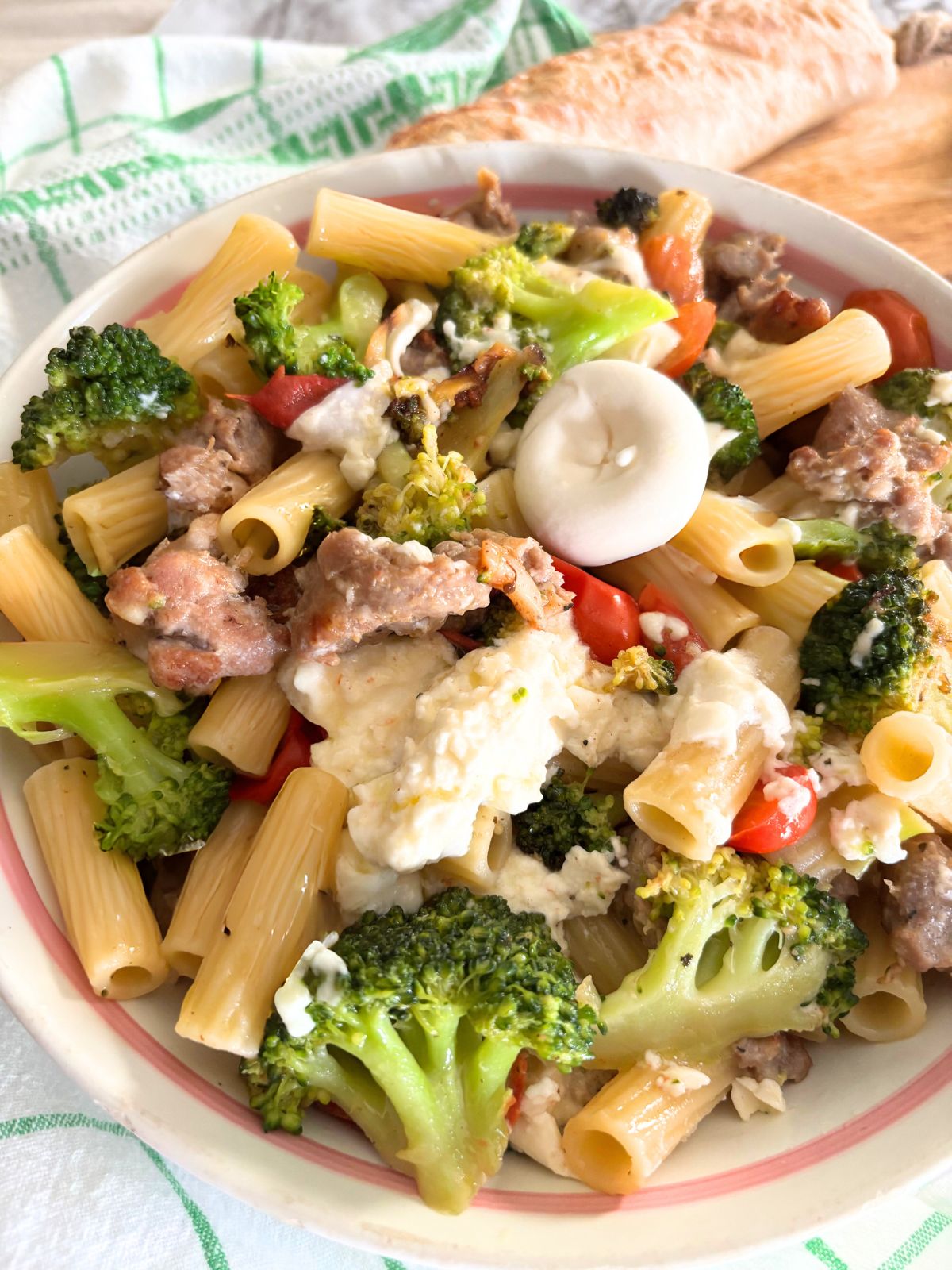
Jump to:
Here's Why You'll Love this Dish
You'll love this recipe for Burrata pasta because it's ready in less than 30 minutes, plus:
- creamy and indulgent burrata melts into the pasta creating a luscious sauce
- balanced flavors of sausage, tender broccoli and creamy cheese in every bit
- comforting food that's elegant too looking impressive but it's really so simple to make
- versatile that you can swap out the sausage and vegetables with your own ingredients
This page contains affiliate links, which means I may receive commissions if you choose to purchase through links I provide (at no extra cost to you). Thank you for supporting the work I put into this site! As an Amazon Associate I earn from qualifying purchases.
Did you know?
Burrata was first made in the Apulia (Puglia) region of Southern Italy in the early 1900s as a clever way for cheesemakers to use up mozzarella scraps. Its name comes from the Italian word burro, meaning "butter", because of its rich, creamy texture.
Traditionally, burrata was wrapped in fresh green leaves as a sign of freshness. If the leaves wilted, you knew it was time to eat it!
Today, burrata is considered a delicacy, loved worldwide for the way it transforms simple dishes like pasta, pizza or salads into luxurious tasting dishes.
Ingredients
For this burrata pasta recipe, you'll need: salt, olive oil, garlic, pork sausage, broccoli, cherry tomatoes, vegetable broth, and rigatoni pasta.
For exact measurement details and directions see recipe card...
How to Make Burrata Pasta
Making burrata pasta is real quick. Prepare by washing and cutting your broccoli. Place a pot of water on the stovetop and bring to a boil. When pot comes to boil, add salt and pasta to the water.
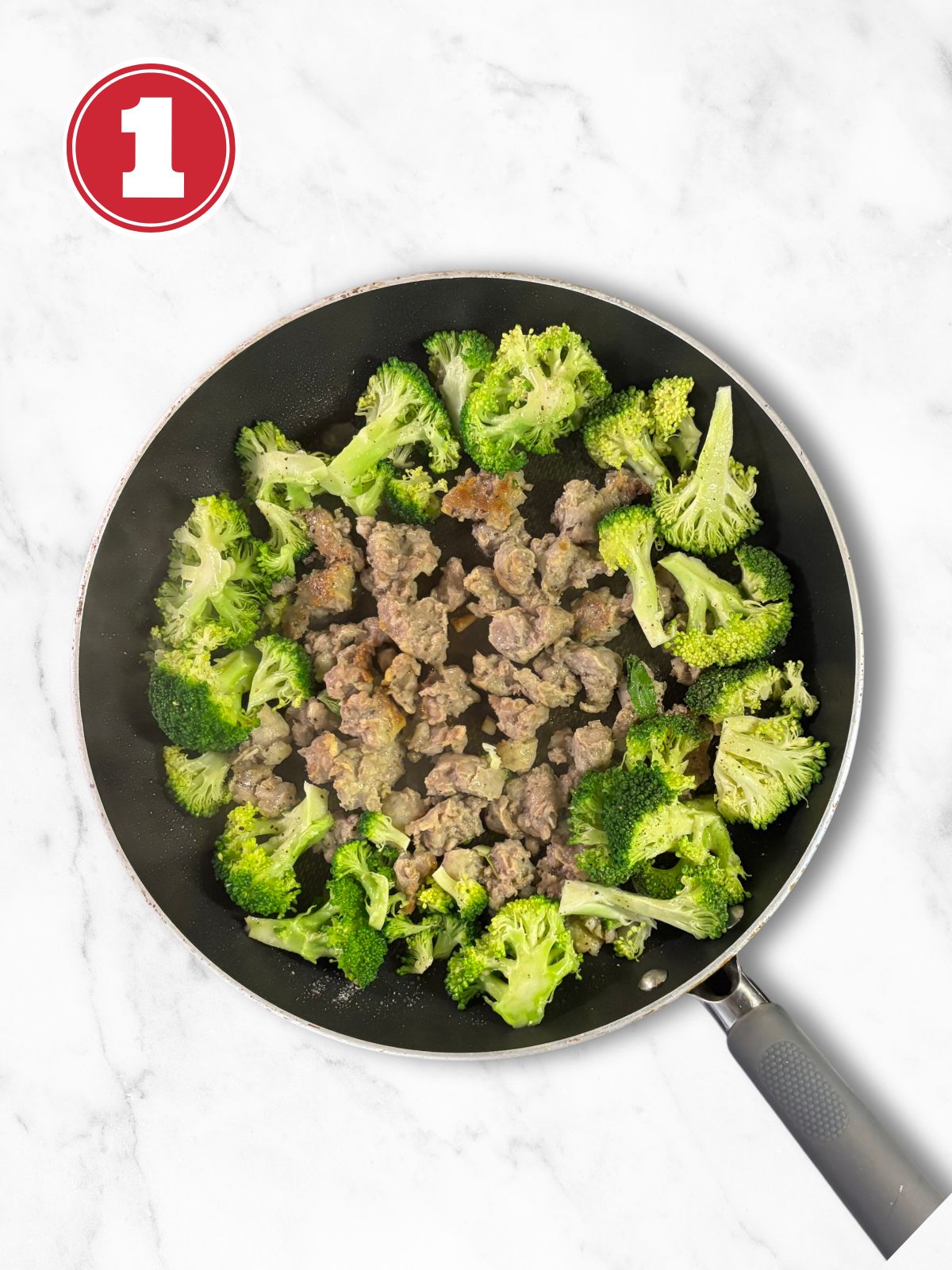
Remove casing from sausage and set aside. Heat up olive oil on medium heat and sauté garlic until fragrant.
Start breaking apart the sausage in chunks and add it to the pan. Sear the sausage, then lower heat to medium low.
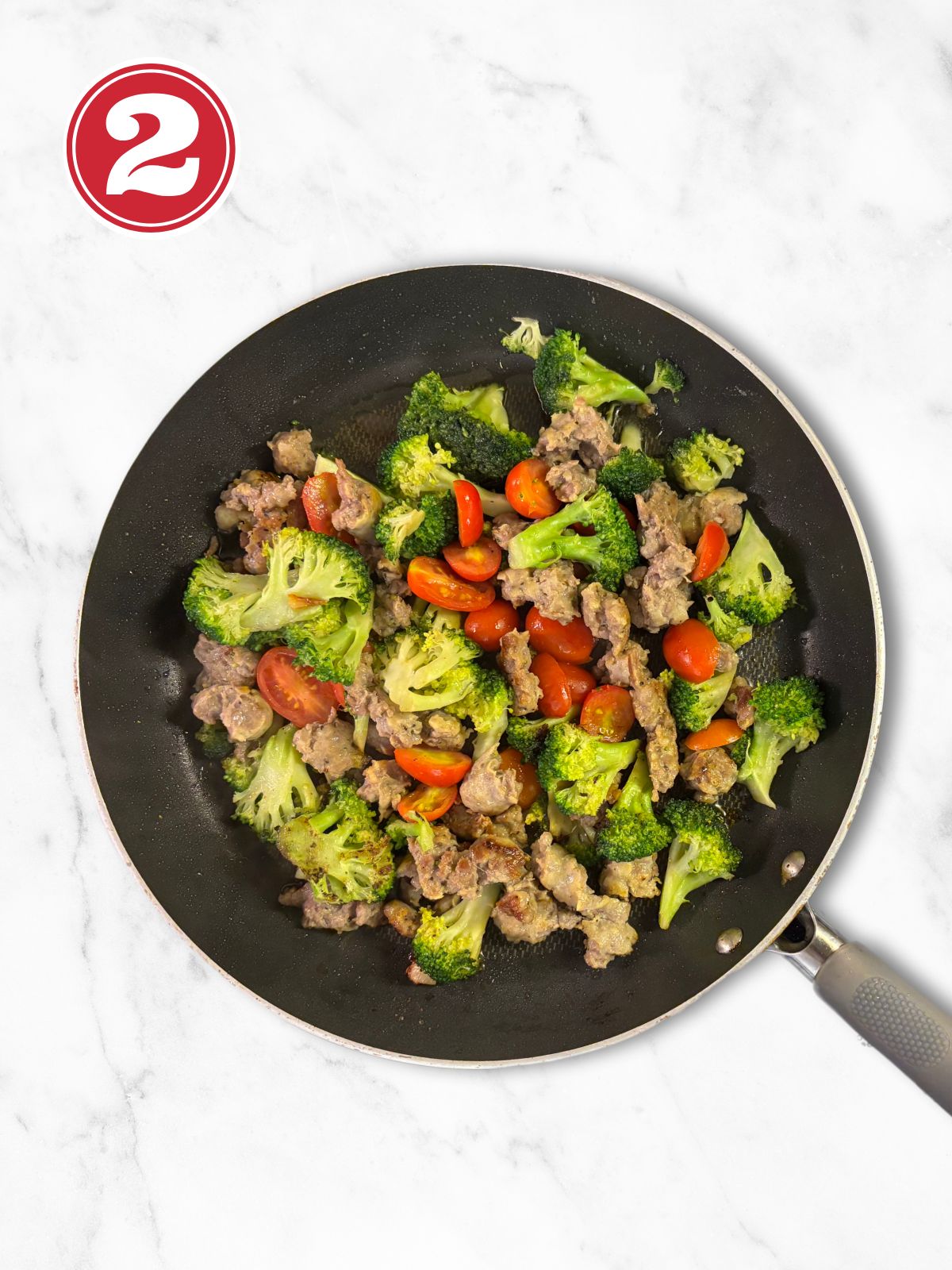
Add chopped broccoli and cherry tomatoes, simmer on low for about 20 minutes. Add vegetable broth if the bottom of the pan is dry.
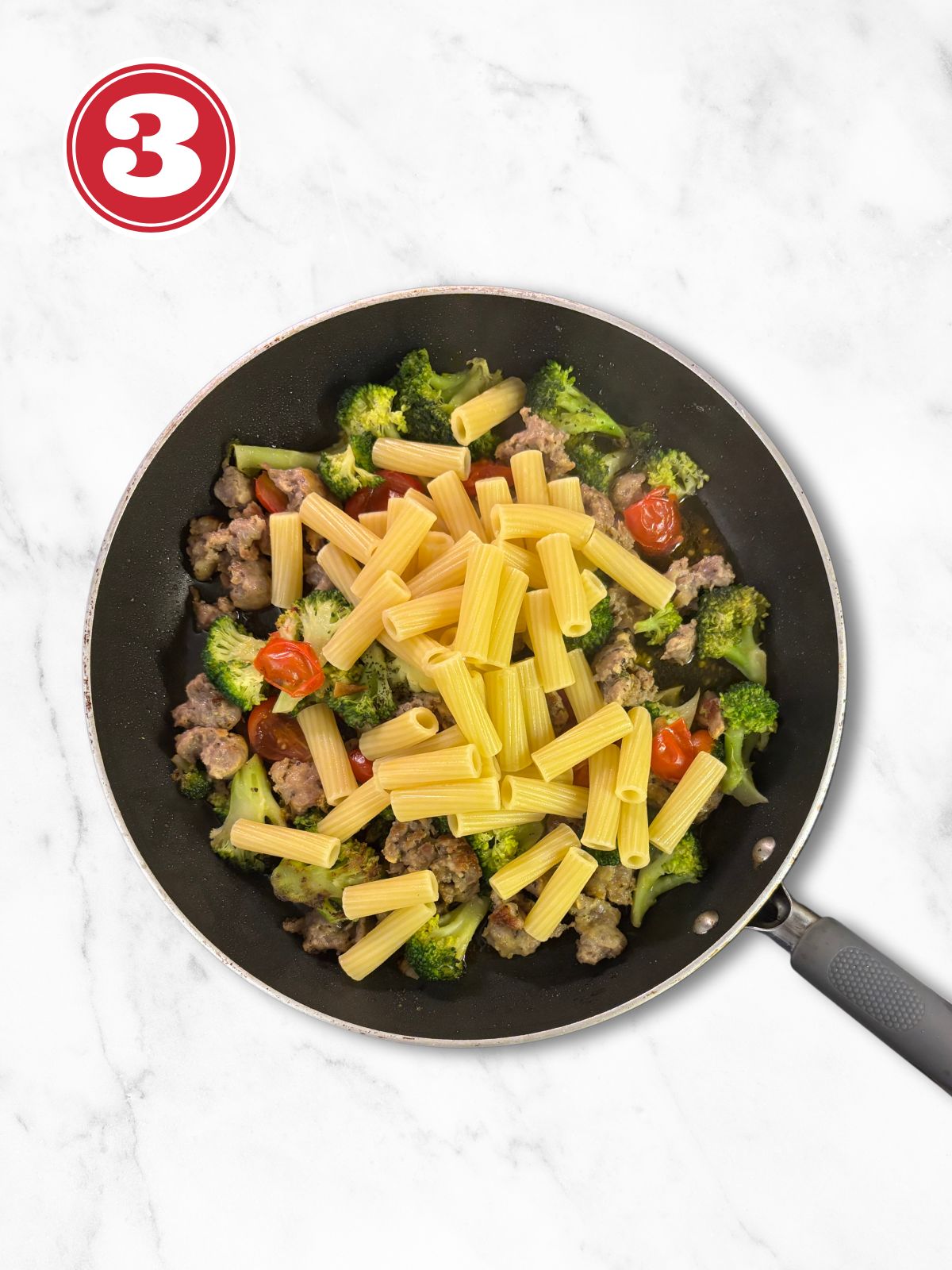
Once pasta is cooked al dente, scoop it out and into the skillet with the sausage, broccoli and tomatoes. Mix well.
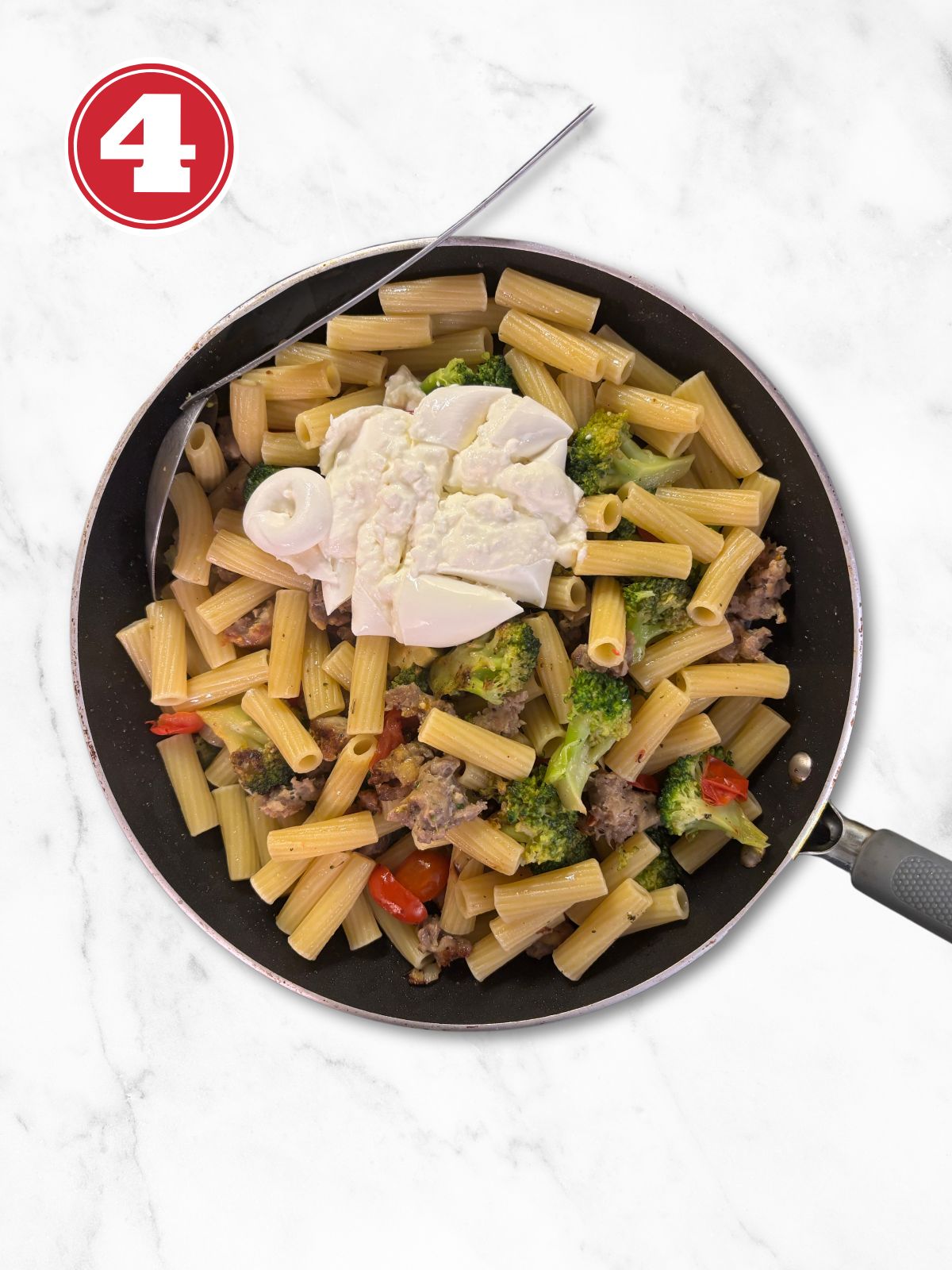
Gently remove the burrata from the packaging and place on the pasta that's in the skillet. Make sure that you have turned off the stovetop burner. Using a knife or scissors, cut it up into 8 to 10 pieces. Mix everything together ensuring that all the pasta gets pieces of the creamy burrata.
Storage:
Store leftovers refrigerated in an airtight container. To reheat, place in a microwave safe bowl and warm up on high. Sprinkle cheese on top and eat.
Freezing burrata pasta is not recommended.
Top Tips
Cook your pasta al dente, which means "with a bite" or slightly undercooked.
Add the burrata at the end. Burrata does not require cooking so all you need to do is mix it in to the pasta and serve.
Substitutions and Variations
Here are some variations to consider when making this burrata pasta:
- Protein - instead of pork sausage, use turkey or chicken sausage
- Burrata - use ricotta if you don't have burrata readily available or even add it to the original recipe
- Gluten Free - use a gluten free pasta
- Extra Creaminess - add cream cheese or mascarpone for extra creaminess
The perfect recipe isn't that far away. I'd love to know how you substituted ingredients to fit your dietary needs. Drop a comment below and let me know!
Answers to Commonly Asked Questions
Burrata is a fresh Italian cheese made from cow's milk which looks like a ball of mozzarella, but inside it's filled with a luscious mixture of stracciatella (shredded mozzarella curds) and cream. Traditionally it was made from buffalo milk, especially in Southern Italy where water buffalo were more common.
Desserts to Finish
Looking for other recipes like this? Try these:
Recipe Details
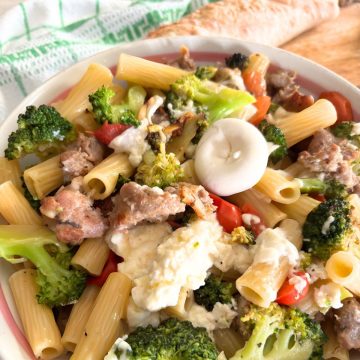
Creamy Burrata Pasta with Sausage and Broccoli
https://easyhomemaderecipes.caIngredients
Instructions
- Place a pot of hot water on the stove and bring to boil. Add salt and pasta to water.14 oz pasta, ½ tsp salt
- Remove casing from sausage and set aside.1 lb pork sausage
- Heat up olive oil on medium heat and sauté garlic until fragrant.4 tbsp olive oil, 1 clove garlic
- Start breaking apart the sausage in chunks and add it to the pan. Sear the sausage, then lower heat to medium low.
- Add chopped broccoli and cherry tomatoes, simmer on low for about 20 minutes. Add vegetable broth if the bottom of the pan is dry.1 lb broccoli, 5 oz cherry tomatoes, ½ cup vegetable broth
- Once pasta is cooked al dente, scoop it out and into the skillet with the sausage, broccoli and tomatoes. Mix well.
- Gently remove the burrata from the packaging and place on the pasta that's in the skillet, Make sure that you have turned off the stovetop burner. Using a knife or scissors, cut it up into 8 to 10 pieces. Mix everything together ensuring that all the pasta gets pieces of the creamy burrata.
- Serve immediately with your favorite cheese.
Notes
Top Tips
Cook your pasta al dente, which means "with a bite" or slightly undercooked. Add the burrata at the end. Burrata does not require cooking so all you need to do is mix it in to the pasta and serve.Nutrition
PIN it for later here
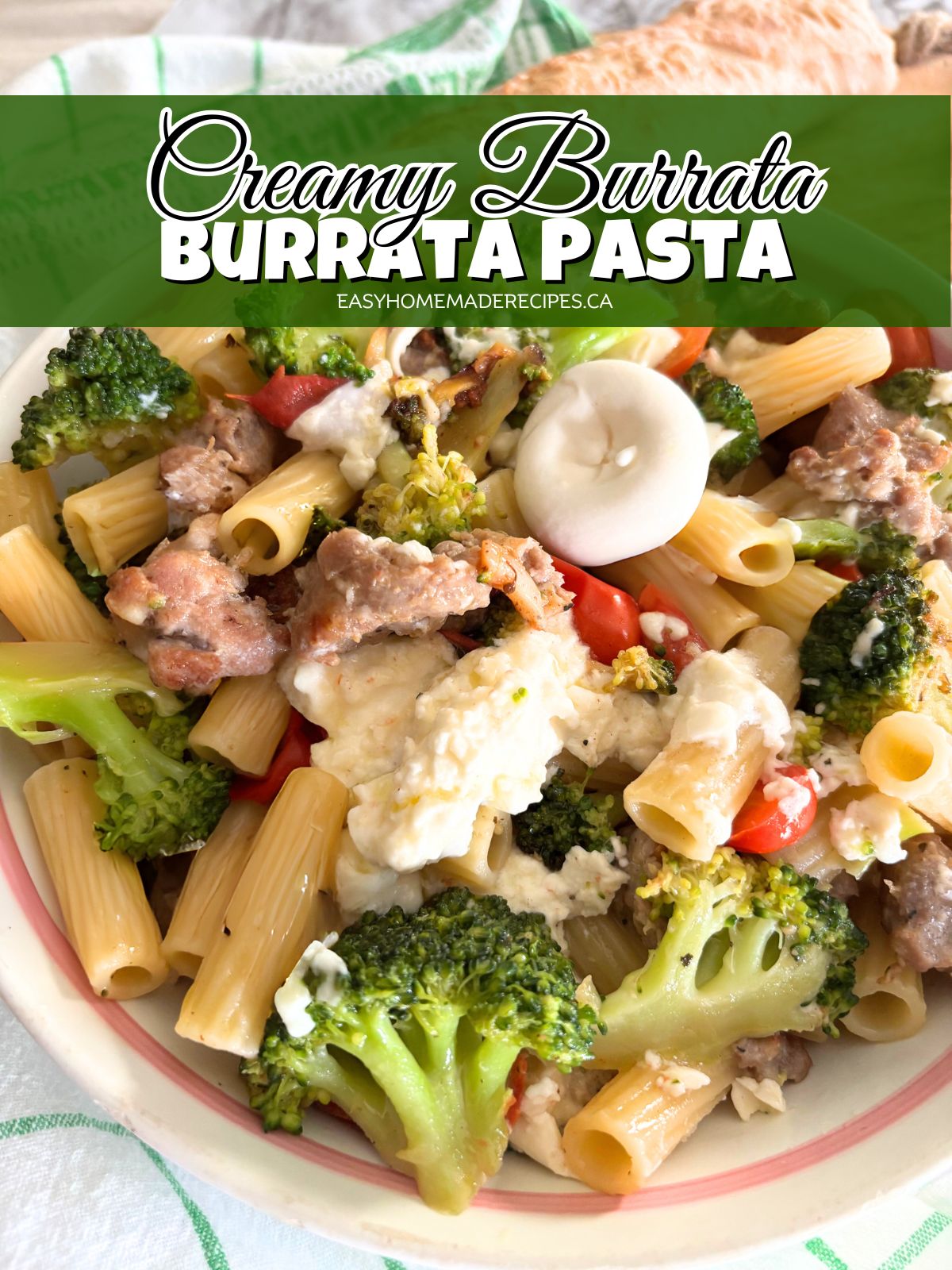
Food Safety
Note that the storage guidelines provided on this page and site are estimates from personal experiences. We are all adults and as an adult you are responsible to ensure that the food you eat is safe to eat. Since, I'm not a food safety expert, you are responsible to review your local guidelines on food storage prior to storing any food left-overs.
Remember to:
- Not use the same utensils on cooked food, that previously touched raw meat
- Wash hands after touching raw meat
- Don't leave food sitting out at room temperature for extended periods
- Never leave cooking food unattended
- Use oils with high smoking point to avoid harmful compounds
- Always have good ventilation when using a gas stove
For Canadian Guidelines check the Government of Canada Food Safety Guidelines or see more guidelines at USDA.gov.


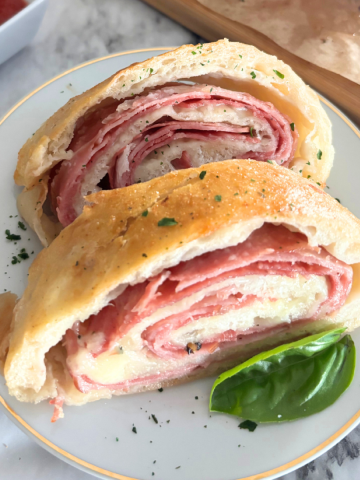
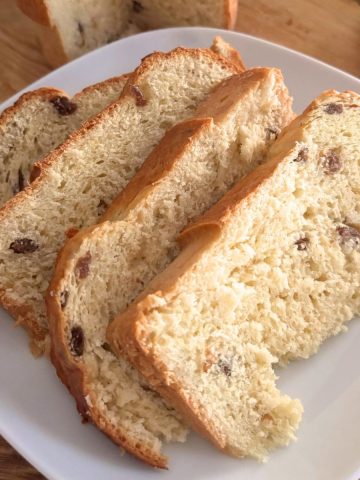


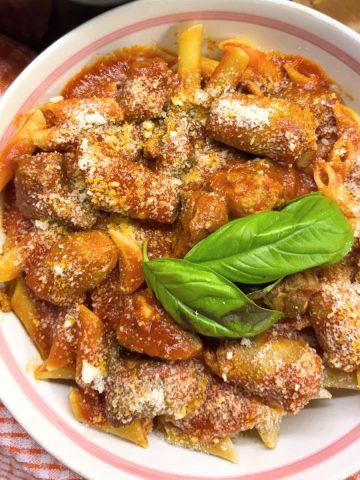
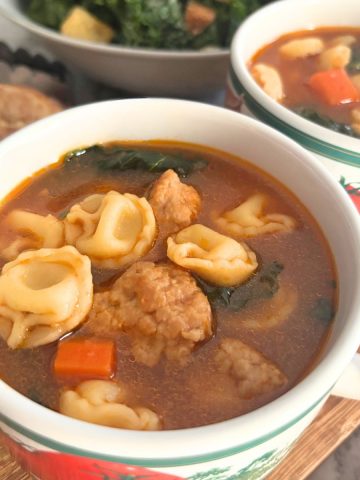

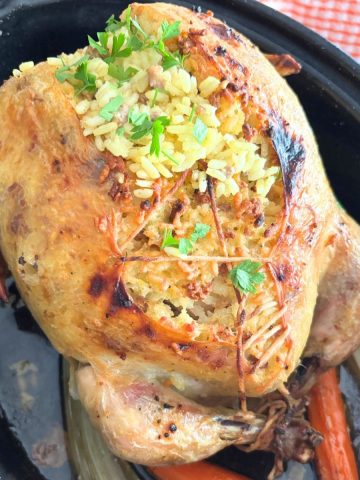
Comments
No Comments